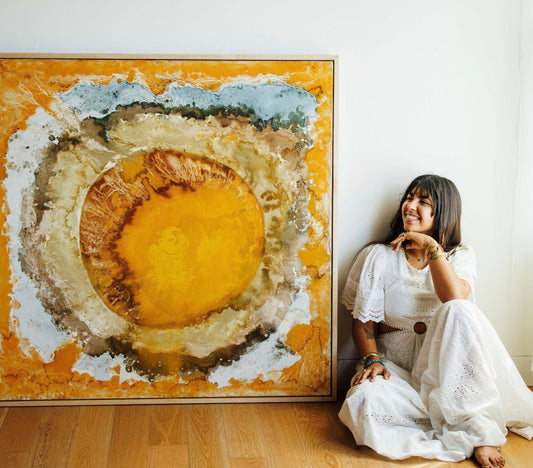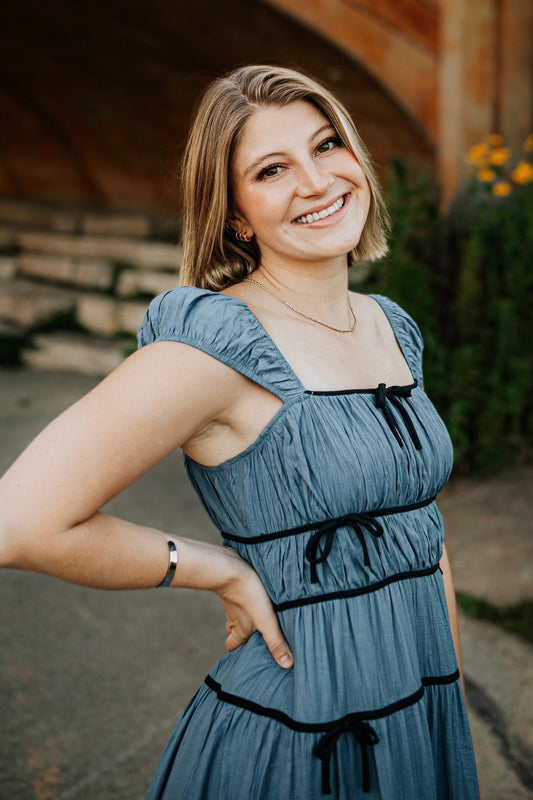The Experience of the Digital: Alida Sun
Code-based digital art is often separated from the rest of the traditional art world and placed within its own category entirely. But why? Multidisciplinary artist Alida Sun challenges this notion, proving that in so many ways, tech art exists within the same societal, economic, and cultural structures as everything else we do. Sun believes that in these systems, technology is often oppressive and harmful. Because of this, Sun explores how to approach digital art in subverted ways, breaking down barriers one mesmerizing generative art piece at a time.
Sun began in traditional mediums. She reflected with ArtRKL, “I drew on basically anything I could find,” A nostalgic tone accompanied her voice as she said, “I’m very much a self-taught artist. I remember Tumblr being sort of my MFA program.”

Early in her career, Sun worked in painting, illustration, and industrial design, eventually arriving at an expansive practice influenced by many mediums.
“The blend of physical and digital media is something you see a lot in my practice, especially in my installations.”
Sun currently lives and works in Berlin. When asked about her origins, though, without hesitation, she said,
“A politically imposed idea of the ‘alien’ or ‘other’ influenced my background, so I would say I’m from the internet and outer space… This translates into some very real, stark realities that I confront in my work. I think algorithmic mediums, which I primarily work with, yield a lot of inspiration and rich, fertile ground for exploring this concept.”
Confronting these stark realities through code-based, sun intentionally works in free, open-source frameworks to promote accessibility. She explains,
“Code as a medium can create new ways of living. For me, the important thing is not specifically the program, language, or framework, but rather the free nature of it. There’s a loosely networked constellation of resources for code art communities, to name a few, there’s P5Js, The Processing Foundation, Pure Data, and Hydra, all of which are very welcoming. We have to acknowledge that art is so often inaccessible, and when you have a framework that actively acknowledges this and tries to break down these barriers, that becomes a key element to more ethical practices of code-based art making.”
When something is open source, it promotes archival practices and record keeping. Sun’s position on open-source frameworks actually benefits the traditional art practice of restoration for future generations.
“To engage with technology and art, one must be critical and questioning of–or at least aware–of the implications and frameworks in which your work exists. It’s a very critical time we are in, and I want my work to be accessible. So, when thinking about code art in the context of art history and archiving, no one can preserve non-open-sourced work for the future. This is yet another practical reason to opt for open-source frameworks. If you want artwork to change discourse and influence culture in positive ways, then it needs to be able to be preserved. That’s another very practical aspect of open trademarks that is less talked about.”
And Sun’s work certainly will change discourse and influence culture. Already, it is described as futuristic and cutting-edge. She told ArtRKL,
“I think often, when you present something grounded in technology, that ‘futuristic’ description is inevitable. I’m not so much interested in futurism as an aesthetic, but I do think about intersectional futurism in my work, especially as a counterpoint to corporate boomer futurism.”
With the belief that art should never take second place to commerce or whether or not someone can afford to buy something. Sun told ArtRKL,
“I think this mindset can be very liberating given these existing power structures and systems meant to isolate and atomize individuals. When an artist creates their own systems using open-source resources, it is a form of liberation from these potentially limiting, pre-existing systems.”
And then, of course, there’s NFTS–and it's complicated.
“Generative art, and specifically code-based generative art, is uniquely suited toward blockchain and the vaguely defined web-3. In that sense, it is compelling and at the same time, there’s a lot to criticize. I’ve participated in NFTs in a generative art context and it has changed a lot of people’s lives. There needs to be a system where artists can make a sustainable living in this increasingly digital world. In reality, it's fascinating to think about what is going to happen, even in the next 5 years.”
NFTs commodify the digital art-making world, and in doing so, bring into play the capitalistic mindset so deeply rooted in the art world at large. This profit-driven side of NFTs, just like the rest of the traditional art world, promotes a sense of hustle culture that Sun rejects, even though when she spoke with ArtRKL, she was on day 1,792 of an art-making streak. But wait–it's not what you think.
“I started art making as a small child. I would make 7 - 10 small sketches a day without any agenda. It was a natural state for me. I think in a lot of ways, my practice is about returning to that completely unfettered creative freedom. I started this daily code-based art practice to get better at documenting and archiving my work.”
Collaborations with code in this way actually preserves burnout and promotes discipline, and Sun is very much anti-hustle culture.
“I am very intentional with my process, and if I was not, I would not have been able to make so many daily, consecutive works as I have. In many ways, code-based art is inherently collaborative and provides a systematic framework that is gentle. I’ve been able to create as many days as I have because the process is something I can let be free. My practice had to be something restorative and healing in that way.”
Sun remains largely influenced by the collaborative practice between the artist and code, which is prominent in Tokyo and Kyoto's code art scenes. Sun recently participated in a public show in Tokyo, Japan, Poems in Code, organized by Civic Creative Base Tokyo [CCBT] and TOP Museum [Tokyo Photographic Art Museum]. Letting the code be free and allowing it to make decisions is key to Sun’s practice being restorative.
So, what happens next for Sun’s unique and restorative form of art making?
“Lately, I’ve been so inspired by live performance and live coding that ultimately integrates traditional and new media art forms and audience participation. I am so fascinated by how code-based art can affect and possibly restore people on a personal level and seeing how music can heal.”
With an artistic vision that extends far beyond her mind-bending generated artworks, Sun’s holistic approach to art-making considers social structures, cultural biases, economics, sound, noise, open-source frameworks, and ways to restore digital art for generations. Follow her work on Instagram at @alidasun, and stay tuned for her upcoming book project with Vetro Editions.
In the meantime, let’s all try out Alida Sun’s daily practice, finding restoration, creativity, and connection at least once a day. Whatever that might look like for you.
©ArtRKL™️ LLC 2021-2024. All rights reserved. This material may not be published, broadcast, rewritten or redistributed. ArtRKL™️ and its underscore design indicate trademarks of ArtRKL™️ LLC and its subsidiaries.








